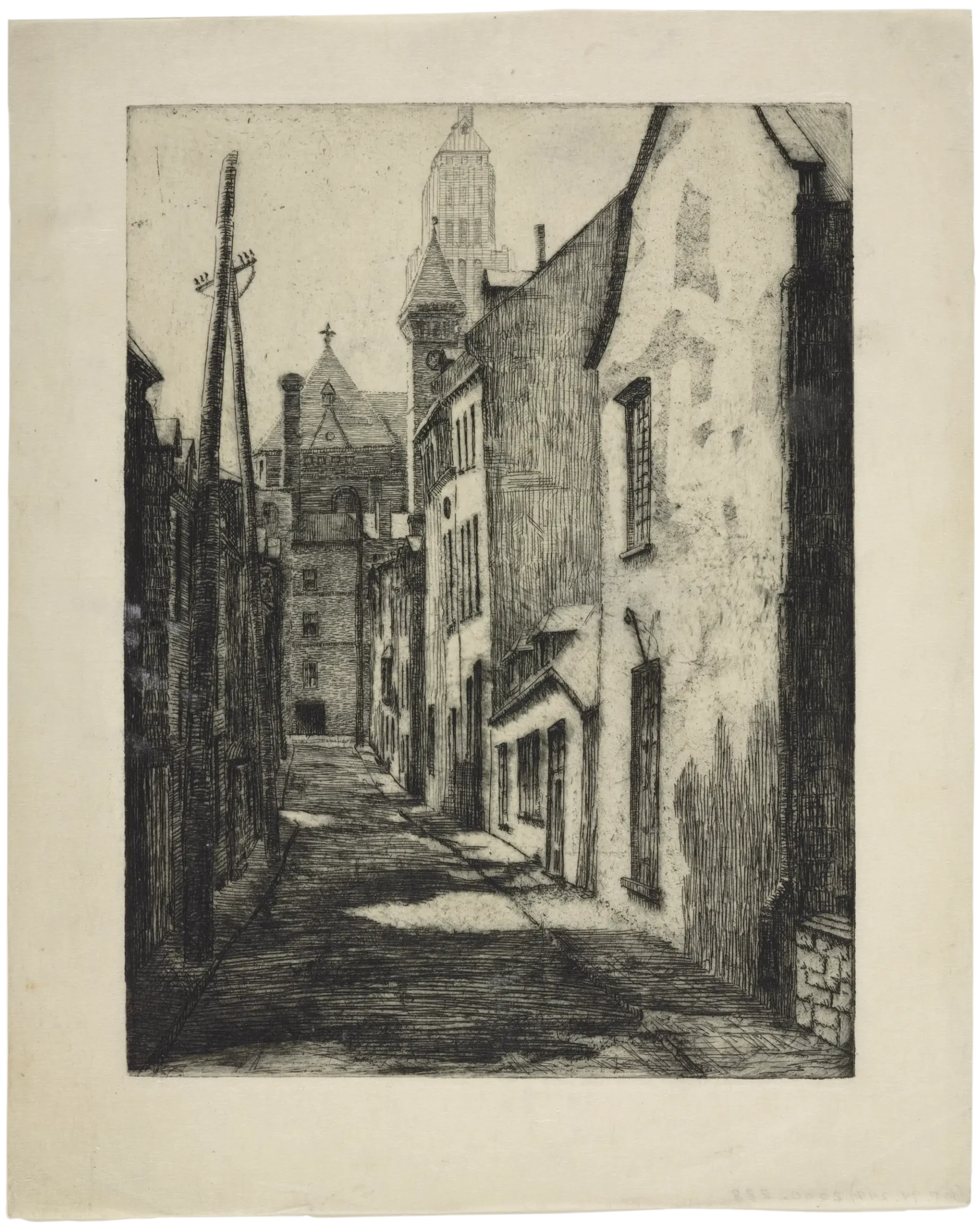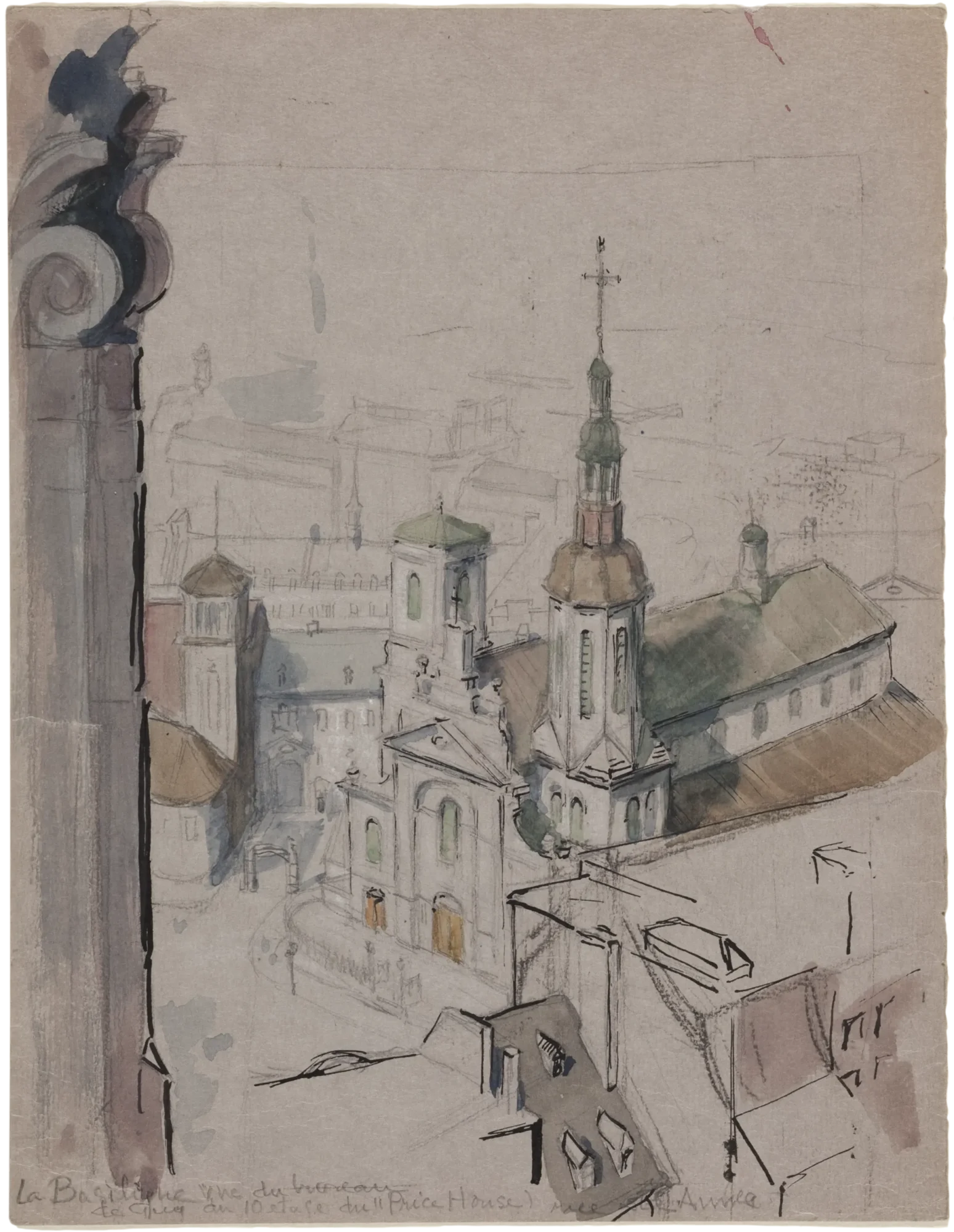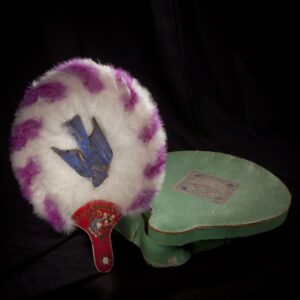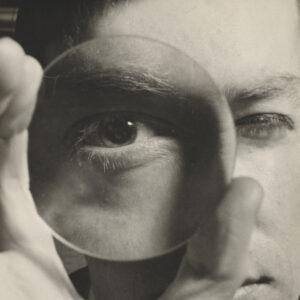Simone Hudon (1905–1984)

Simone Hudon, Rue Saint-Flavien à Québec (Saint-Flavien Street in Quebec City), c.1930–44
Etching and drypoint, 24.9 x 20 cm (paper); 20.2 x 15 cm (image)
Musée national des beaux-arts du Québec, Quebec City
Following in the footsteps of her teacher, the painter and engraver Henry Ivan Neilson (1865–1931), Simone Hudon contributed to the revival of original printmaking in Quebec City. Neilson established the first printmaking workshop at the École des beaux-arts de Québec upon its founding in 1922, making it the only school in Canada to offer formal printmaking training. As a student, Hudon honed her skills in etching and quickly mastered the complexities of printmaking at all stages of the process, before graduating in 1931. After Neilson’s death that same year, she was appointed temporary head of the printmaking workshop, and in 1936, she secured the position of professor of printmaking, perspective, drawing, and decoration, a role she held until she relocated to Montreal in 1945.

Rue Saint-Flavien à Québec (Saint-Flavien Street in Quebec City) displays Hudon’s interest in elevating the authentic character of the city in her works. She captures old streets and tranquil rural landscapes, as in Au pied du Cap-Blanc, Québec et la Tour Martello sur les plaines d’Abraham Martin (At the Foot of Cap-Blanc, Quebec City and the Martello Tower on the Plains of Abraham Martin), 1930–45. Her technique is dynamic and intricate, and her expressive style emphasizes strong contrasts of light and shadow.
Apart from a brief foray into religious art between 1938 and 1943, Hudon dedicated herself to the picturesque depiction of her native city in drawn and engraved works. Her art reflects a commitment to maintaining the charm of Quebec City’s old walls, alleyways, and buildings, which were under threat at the time from the tide of modernity. In 1944, the art critic and painter Jean Paul Lemieux (1904–1990) praised Hudon’s work and acknowledged her role in preserving the image of Quebec’s historic capital. “The machine age with its dreadful uniformity,” he warned, “is spreading and crushing all that gave Quebec its unique character among the cities of America.”
Hudon first captured her subjects by sketching them on location or referring to historical documents. Her compositions in watercolour, charcoal, and enhanced graphite are standalone works of art that were exhibited throughout the 1930s in Quebec, across Canada, and internationally. From these drawings, she created prints that capture the expressiveness and immediacy so highly valued by artists involved in the etching revival movement.
Between 1930 and 1945, Hudon produced more than sixty plates of picturesque urban scenes, including the etching Québec vu du port (Quebec Seen from the Port), 1932/33. She would typically print between twenty-five and one hundred impressions, a clear indication of strong market demand. These works were often featured in the annual exhibitions held by Canada’s two main professional associations of painters and printmakers: the Canadian Society of Graphic Art and the Society of Canadian Painters-Etchers and Engravers (both based in Toronto). In 1935, Hudon’s engravings were selected to represent Canadian works in an exhibition at the Devon Art Club in Torquay and London, England.
In 1945, Hudon stopped engraving, but interest in her prints experienced a resurgence in 1967 with the publication of the album Au fil des côtes de Québec. Intended to mark the Canadian Centennial, the book included text from Hudon and was illustrated with thirty-six prints reproduced using photogravure.

 About the Author
About the Author
 More Online Art Books
More Online Art Books
 Acknowledgements
Acknowledgements